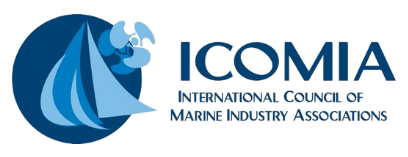Special zones depending on the security equipment on board.
RRG Category: Safety Equipment
Boat Licensing & Skippers Certificates Design, Construction, Compliance Environment Health & Safety/Exposure Levels Marinas and Harbours Operating Limits Product Liability Registration Regulations for charter boats Safety Equipment Taxation Zero Emission Zones
-
Spain – Safety Equipment
-
Belgium – Safety Equipment
The list of the mandatory safety equipment is available on the website www.mobilit.fgov.be. From 1st January 2009, all motor boats with length > 7m navigating in Belgian inland waterways (either Belgian or visiting craft) have to be equipped with 2 VHF radios (fixed or portable).
-
Canada – Safety Equipment
New Carriage Requirements for Small Vessel Safety Equipment went into effect April 1, 1999. For complete details visit the transport Canada web site at: http://www.tc.gc.ca/BoatingSafety/equipment.htm
-
New Zealand – Safety Equipment
Sufficient lifejackets must be carried on each boat for each person.
-
Australia – Safety Equipment
State legislation applied to local waters. Standards Australia define acceptable equipment standards. National register of approved equipment maintained by federal agency. Compulsory wearing of lifejackets on some vessels, or during darkness or bar crossings in most states. Strong ongoing awareness campaign promote wearing of PFD.
-
Turkey – Safety Equipment
4 types of safety equipment set is defined. Basic, Coastal, Offshore and overseas
-
South Africa – Safety Equipment
Each class of vessel, depending on inland vs coastal, distances to shore, each have different safety requirements and these can be found online on the SAMSA website. There are updated regulations on permitted life jackets for sale in South Africa. http://www.samsa.org.za/sites/samsa.org.za/files/MN%2024%20of%202014_201…
-
Poland – Safety Equipment
Life jackets must be kept on board all ships in sufficient numbers for all persons on board. In addition, the obligation to have lifebuoys and appropriate fire extinguishers in the number specified depending on its size, purpose , power, propulsion machinery and equipment posing a fire hazard.
-
Italy – Safety Equipment
Safety equipment on board are compulsory according to the actual distance from the coast and to the number of persons onboard. Italian regulations provide construction and certification requirements for lifebuoys, life rafts, distress signals, magnetic compasses, radar reflectors. Considering the distance from the coast there are different set of safety equipment. The range under consideration are the following: distance from the coast
-
Japan – Safety Equipment
Under the Domestic Law, the engine-equipped vessels of less than 20 gross tons are required to be equipped with the legal equipment, including habitation, drainage, mooring, lifesaving and fire fighting equipment, and navigation devices.
